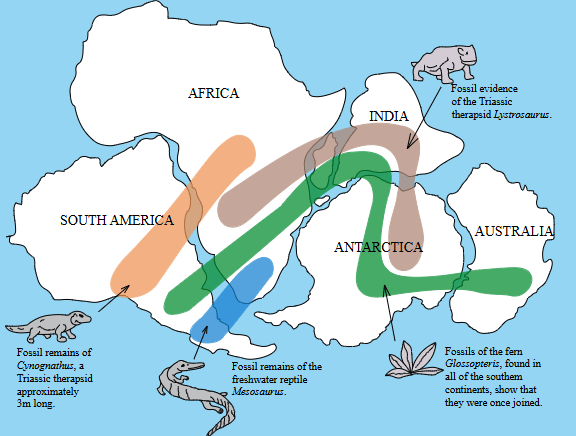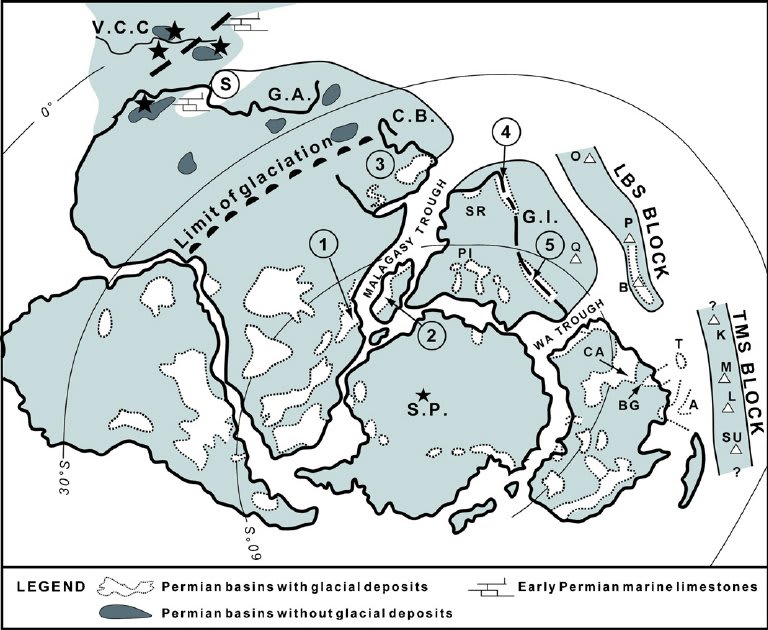This is a trial balloon for a longer post. Please let me know which parts you’re interested in, if any.
The standard (North American) story of plate tectonics is of accidental discovery: continental drift was rejected for lack of evidence or a mechanism. 50 years the US Navy discovered an anomaly on the sea floor that eventually led to the discovery of plate tectonics. But before that accidental discovery, geologists were very close to codifying plate tectonics on purpose.
Some definitions:
continental drift was proposed by Alfred Wegener in 1912. He believed that the continents moved through the ocean floor like ships moving through ice.
Plate tectonics is the theory that the earth has a gooey center, covered in large large plates (the ocean/continental floor) with water/more rock on top of them. Like an M&M with a candy shell several times thicker than the chocolate.
Wegener proposed Continental Drift in 1912. The past is a different country, but when I look at the evidence, it sure looks plausible to me. He didn’t just point to the jigsaw puzzle shorelines between Africa and South America, but to fossil evidence that made no sense without adjoining land, geological features that were continuous between South America, Africa, and India and evidence of glaciers where glaciers should not be.
Continental drift was laughed out of the US, Canada, and parts of Europe, but it did establish a toe-hold in the latter. It also received widespread support in South America, Africa, and India- the plates that once made up Gondawanaland (except for Australia).
Those scientists rapidly narrowed in the details of drift. The theory that Earth had a gooey center on which continents floated (isostasy) was already around by 1912, although far from proven. Drifters (aka mobilists) experimented to figure out what the “unit” of flotation was, and had proven it was fairly large (i.e. plates).
Drift was often accused of having no mechanism. This was false from the beginning- Wegener suggested mecahnisms, they were just wrong. But by the 1920s, geologists were experimenting with convection currents in the Earth’s core as a potential explanation- the same as plate tectonics.
Jump to America in the 1940s. WW2 and the Cold War pique the Navy’s interest in mapping the sea floor to support submarine warfare. Embedded earth scientists discover magnetic stripes on the sea floor- long, thin, alternating zones of positive and negative polarity
Sea floor striping triggers a series of investigations that eventually lead to the discovery and universal acceptance of plate tectonics in the late 60s/early 70s (this is also how we learned the Earth’s magnetic field occasionally flips).
If continental drifters were so close to codifying plate tectonics via purposeful investigation, why do Americans only hear about the accidental discovery? Naomi Oreskes blames differences in philosophy of science. I dug into her sources, and this does not check out. Henry Frankel blames regionalism and differences in local geology, which is much more plausible but not quite as proven as he implies.
The default is that people overencourage, so here’s a comment to upvote if you’re not that interested in this post (including, like, a little bit interested). I’m doing this rather than agree/disgree voting because it retains more information about how many people are interested.
This is a trial balloon for a longer post. Please let me know which parts you’re interested in, if any.
The standard (North American) story of plate tectonics is of accidental discovery: continental drift was rejected for lack of evidence or a mechanism. 50 years the US Navy discovered an anomaly on the sea floor that eventually led to the discovery of plate tectonics. But before that accidental discovery, geologists were very close to codifying plate tectonics on purpose.
Some definitions:
continental drift was proposed by Alfred Wegener in 1912. He believed that the continents moved through the ocean floor like ships moving through ice.
Plate tectonics is the theory that the earth has a gooey center, covered in large large plates (the ocean/continental floor) with water/more rock on top of them. Like an M&M with a candy shell several times thicker than the chocolate.
Wegener proposed Continental Drift in 1912. The past is a different country, but when I look at the evidence, it sure looks plausible to me. He didn’t just point to the jigsaw puzzle shorelines between Africa and South America, but to fossil evidence that made no sense without adjoining land, geological features that were continuous between South America, Africa, and India and evidence of glaciers where glaciers should not be.


Continental drift was laughed out of the US, Canada, and parts of Europe, but it did establish a toe-hold in the latter. It also received widespread support in South America, Africa, and India- the plates that once made up Gondawanaland (except for Australia).
Those scientists rapidly narrowed in the details of drift. The theory that Earth had a gooey center on which continents floated (isostasy) was already around by 1912, although far from proven. Drifters (aka mobilists) experimented to figure out what the “unit” of flotation was, and had proven it was fairly large (i.e. plates).
Drift was often accused of having no mechanism. This was false from the beginning- Wegener suggested mecahnisms, they were just wrong. But by the 1920s, geologists were experimenting with convection currents in the Earth’s core as a potential explanation- the same as plate tectonics.
Jump to America in the 1940s. WW2 and the Cold War pique the Navy’s interest in mapping the sea floor to support submarine warfare. Embedded earth scientists discover magnetic stripes on the sea floor- long, thin, alternating zones of positive and negative polarity
Sea floor striping triggers a series of investigations that eventually lead to the discovery and universal acceptance of plate tectonics in the late 60s/early 70s (this is also how we learned the Earth’s magnetic field occasionally flips).
If continental drifters were so close to codifying plate tectonics via purposeful investigation, why do Americans only hear about the accidental discovery? Naomi Oreskes blames differences in philosophy of science. I dug into her sources, and this does not check out. Henry Frankel blames regionalism and differences in local geology, which is much more plausible but not quite as proven as he implies.
The default is that people overencourage, so here’s a comment to upvote if you’re not that interested in this post (including, like, a little bit interested). I’m doing this rather than agree/disgree voting because it retains more information about how many people are interested.